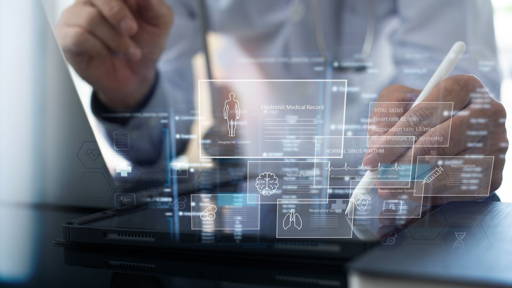ICD-10 or just a whim?
Headache or backache, weakness, lowered mood, sleepiness – each of us experiences changes in the body from time to time, which may be a symptom of a disease or only a temporary decrease in psychophysical fitness. Muscle pain is not always a symptom of flu, and not all stomach pain is a sign of food poisoning or more serious digestive problems. It is the physician who decides whether or not we are dealing with a disease, based on 70,000 codes of the ICD-10 – International Classification of Diseases. It is an extensive catalogue that reflects what modern medicine knows about humans and diseases. However, beyond this set of illnesses, which are clearly described and classified, there is a Gray zone. These are conditions ignored by classical medicine. Is malaise the ICD-10 R53 code, meaning "malaise, fatigue" or just a temporary, subjective sense of exhaustion? Is insomnia described with the code F51.0 a disease or just a temporary disorder?
Classical medicine that uses specific measures treats the patient as a fully measurable system of mental and physical features. These binary states – healthy or sick – do not take into account softly defined "well-being,", that is, feeling healthy and happy. Science has given this area up to unconventional medicine, including homeopathy, acupuncture, herbal medicine, or energy therapy, in which patients often seek help, feeling that classical medicine is unable to meet their non-standard expectations. This stratification of medicine may finally come to an end thanks to technologies that analyse the health of each person individually, using not only personalized treatments but also personalized diagnostics.
Holistic algorithms
New technologies, such as wearables, which collect data on health parameters, lifestyle, diet, and behavioural patterns, give an increasingly accurate, personalized picture of each person's health, which can be supplemented with other determinants such as the living environment or genetic data. This way, health and well-being begin to merge into one condition described subjectively and not objectively, as is the case in modern health care. Why is it important? Among other things, to enable evidence-based medicine to meet different needs of people, taking into account their personal perspective. What for some is just a slight headache, for more sensitive people is a condition that hinders normal functioning. Furthermore, to prevent a crisis in science resulting from the erosion of social trust.
Digital technologies enable us to move from incidental to integrated care
Today, millions of people seek help outside the health system because they cannot find solutions to their problems, which are not necessarily a disease, but still generate discomfort. Insomnia, burnout that has not yet been diagnosed as depression, mental strain caused by an increasingly faster lifestyle or stress significantly reduce well-being, and thus the quality of life. And the latter, along with economic development, social transformation, and the increasing, although still diversified, standard of living, is of growing importance. The development of digital health, including the rising popularity of smart watches measuring sleep quality, physical activity and mobile health applications confirms that people want to have control over their health and well-being and that they are looking for harmony that cannot be described in medical terminology.
Physician as personal coach
Digital health has filled a niche, which resulted from the development of highly institutionalized health care. Everyone can gain deep insight into their own physical and mental health, understand complex mechanisms and patterns, and get tips on how to improve their fitness and well-being. What technology enables should now be used by health care systems.
One of the steps should be to extend the scope of data collected in the electronic patient record. Today, standard records contain diagnoses, laboratory test results and medical photos, medical history, prescription drugs, i.e. parameters describing the condition of a patient, of a person. Artificial Intelligence can pre-analyse all information, providing the physician only with relevant links between the data, suggesting potential problems and negative trends. The involvement of technology will be necessary because doctors are already overwhelmed with both the amount of data for manual analysis and the number of patients waiting for assistance. By adding data collected by the patient to the patient's file, including soft lifestyle information, it is necessary to guarantee the automation of interpretation, create appropriate algorithms, and incorporate them into IT systems. The same artificial intelligence solutions could also be included in consumer solutions. In this case, you need to go a step further and enable data transfer from electronic medical records to commercial mobile applications. The benefit would be to move some of the physician's competences to the patient and make better use of human resources to handle cases requiring a personal visit.
Ministry of well-being
The consequence of taking patient data into account in the process of diagnosis and treatment would be a profound change in the functioning of the health care system. Given that certain health parameters monitored continuously could predict the onset of disease well in advance, medicine would become more proactive than reactive. Thanks to mobile technologies, care would be shifted from health care facilities to the patient's home. This would necessitate major changes in the infrastructure of the health care system, shifting the burden of financing from cost-intensive hospitals to the development of technologies such as telemedicine, robotics, and remote health monitoring systems.
The transformation would also affect the current health insurance system, which would have to move away from firmly defined benefits guaranteed under a specific premium to individualized therapies, depending on subjective but measurable needs. Such a model may sound utopian, but, thanks to digital health technologies, it is possible to develop. However, this will not happen as a result of digitalization but must be backed up by a change of mindset at the decision-making level. Today's societies need ministries of prevention and wellness rather than ministries of health.






